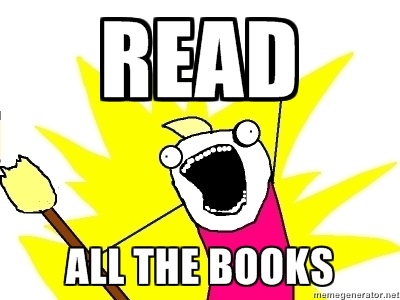A List of Especially Memorable Fiction and Nonfiction from 2016
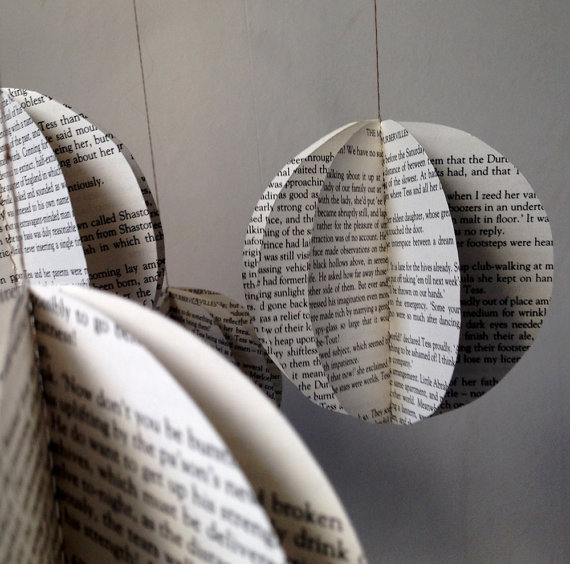
For the past few years I’ve been keeping a list of all the books I’ve read. This simple trick has resulted in a marked increase in the amount of reading I do. I group the book titles by month; when the date is getting to be in the mid- to late 20s and I check my list to find that I’ve only listed one or two books so far, which is often the case, the next several days will include harried bouts of late-night reading intended to prevent myself from later feeling ashamed when I would hope to be proudly perusing my list.
Highlights from this year’s list follow the jump. READ MORE >
25 Points: Seiobo There Below
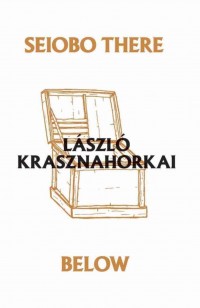 |
Seiobo There Below
by László Krasznahorkai
New Directions, 2013
440 pages / $17.95 buy from Amazon
|
1. I almost laugh, attempting to write anything about the Krasznahorkai, since I’ve done an interview with the translator for The Paris Review, and feel my work is done here, and also since we are dealing with a nearly 500-page book that lashes out in chunks of twelve-page sentences, transcendent, dazzling, insane, hilarious, vicious and brutal, determinedly unexplainable and unexplained.
2. Transparency is not the hallmark of the Krasznahorkai.
3. But ok. This is the Hungarian writer at the forefront of a renaissance in Hungarian letters, an intense, experimental madman whose books are metaphysical puzzles of stunning originality and brilliance.
4. This is a man with burning eyes and a cheap suit, who shows up at Columbia to a packed house and reads…in the dark…in Hungarian…and kinda actually scares people.
5. There’s a quote from Susan Sontag on the back of Seiobo There Below that calls László Krasznahorkai “the Hungarian master of the apocalypse,” which is intimidating, and doesn’t sound like much fun. Do not be scared away; this book is a pleasure to read, and even funny.
6. The last chapter is named “Screaming Beneath the Earth,” which is a reverse riff on the first phrase of Gravity’s Rainbow, “A screaming comes across the sky…”, and gives an idea of the author’s ambition. The book is an incoming rocket, taking on the small matter of the power and transcendence of art.
7. Krasznahorkai has the interesting idea, though I’m not sure I’m convinced, that good art is dangerous. Art in this book tends to overpower ordinary people or drive them insane. Is this pretentious? Probably, right? Real migrant workers are not often driven mad by the sight of glorious paintings.
8. But then again, I also believe in salvation through art. What is a God without destructive power?
9. Seiobo There Below is structured in a series of sections, mostly about artists making art, a few about tourists or exiles. Sections include a modern-day man visiting the Acropolis, a Japanese Noh actor speaking to his disciples, another Japanese artist making a mask, a stork hunting in a river, a Renaissance painter in his workshop, an immigrant in Barcelona.
10. Some quotes: “…to stand there, to look at this life withdrawing for all eternity into death in the human and natural landscape, and to depict what is before him when he looks up from the blank canvas: that is everything…”
July 31st, 2014 / 2:02 pm
Notes on Satantango (the Book and the Film) – Part 1/3
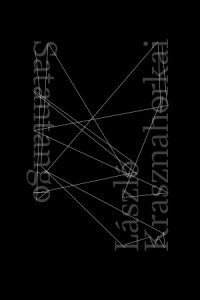 Satantango
Satantango
by László Krasznahorkai
Translated by George Szirtes
New Directions, 2012
288 pages / $25.95 Buy from New Directions or Amazon
&
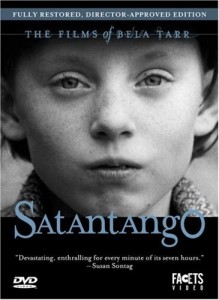 Satantango
Satantango
Directed by Béla Tarr
Screenplay by Lászlo Krasznahorkai
DVD: Facets Video, 2008
435 minutes / Available on Amazon
Released in Hungarian in 1985, Satantango, László Krasznahorkai’s first book, was translated into English only last year. Published by New Directions, the novel displays the melancholy, bleakness, and long sentences that define Krasznahorkai’s other books (War & War, The Melancholy of Resistance, etc.).
Krasznahorkai’s collaborator and fellow apocalypse maker Béla Tarr adapted the 288-page novel into a seven-hour film in 1994. Because of the duration between the appearance of the film and the publication of the English translation, we (like most) had watched Tarr’s adaptation long before reading its antecedent. This reversal of the traditional adaptation-viewing chronology (in addition to Krasznahorkai’s role as screenwriter) makes it difficult to think of the novel independent of the film. But despite the convergence of the two forms of Satantango, we do not believe the demands of the long take are the same as those of the long sentence.
What follows is a collection of take-by-take notes on disc one of the film and the corresponding passages of the novel. (Notes on discs two and three are forthcoming.) Our time stamps are based on the Facets Satantango DVD (2008). Throughout the notes, we acknowledge differences between the novel’s content and the film’s content, as well as translation differences between the novel and the DVD’s subtitles.
***
We see a cow emerge from behind the building, nothing in front of him but a vast scene of thick mud with glimmering streaks of wetness that resemble the trails that snails make when they zigzag across dark pavement. One cow becomes many, and they slowly make their way together. No one leads them or chases them but they seem to know their way. They take their time. They have, it seems, all the time in the world. One even pauses to mount another. This scene, though absent from the novel, sets a haunting tone of obliteration for the film. We watch the cows, then continue to watch, continue to watch past the time of watching, past the time of a simple a gaze or witnessing, look at them for so long that when the camera finally moves away from the herd of animals and pans past the dilapidated buildings, the mundane and bleak textures, the strange marks and letters, the utter signs of disintegration and decay become for us a relief. The wind howls and it feels like silence, yet it is not silent. We can hear the cows’ feet move through the mud, the mooing; the sounds are almost daunting, eerie. Without music (we keep waiting for it, hoping it will come to shake us out of the strange unreal reality of this scene, random sounds that seem to anticipate some cohesive and introductory soundtrack), the scene is discomforting but mesmerizing. Here, inside the muddy world we have found ourselves in, we learn to wait.
[1:35–9:06 / not in novel]
In voiceover:
“One October morning before the first drops of the long autumn rains, which turn tracks into bog, which cut the town off, which fell on parched soil, Futaki was awakened by the sound of bells.” (Satantango, film)
“One morning near the end of October not long before the first drops of the mercilessly long autumn rains began to fall on the cracked and saline soil on the western side of the estate (later the stinking yellow sea of mud would render footpaths impassable and put the town too beyond reach) Futaki woke to hear bells.” (Satantango, novel, page 3)
[9:06–9:50 / page 3]
THE NEWS IS THEY ARE COMING / NEWS OF THEIR COMING
We become complicit in anticipating THEM.
[9:50–9:58 / page 3]
There’s a window centered at the top of the frame. We can hear a sort of musical drone and subtle bells as the room and window grow brighter. At 11:15, there’s off-screen noise—the sound of Futaki removing bed sheets, we surmise. (Note that there’s no clock sound yet.) We come to consciousness with Futaki as he stands and limps to the window at 11:40. He’s wearing a sleeveless shirt and shorts. The room, a kitchen, is now visible. The sound stops, and Futaki comes back toward the camera. The ringing starts up again and he returns to the window. It stops once more and Futaki comes back to the bed. (In the novel, this scene contains a penetrating intrusion into Futaki’s thoughts.) “What is it?” asks Mrs. Schmidt, beginning the film’s first dialogue. Futaki tells her to go to sleep, then says he’ll “pick up [his] share tonight” or the following day.
[9:58–14:17 / page 4]
The camera has turned 45 degrees to the right, facing a small fridge and another table. Shod with laceless high-tops, Mrs. Schmidt crosses the frame from right to left. She moves almost out of frame to take a rag from the door; then she comes toward the camera, raises her nightdress, and squats over a pan. No face. Her head is on her left knee. She splashes water up at her crotch and then stands to wipe with the towel. She exits at left. A fly comes into frame. In the novel, Mrs. Schmidt is a sour-smelling woman. In the film, we have instead this sour-looking image of her. It’s significant that this scene comes so early in the film: an introduction to a quotidian perdition.
[14:17–15:33 / not in novel]
Mrs. Schmidt’s back is to the camera. She’s sitting at the table/window among a collision of patterns: wallpaper, curtains, table cloth, seat cushions, bureau cloth. Off screen (from bed), Futaki asks her, “You had a bad dream?” At 15:42, the fly appears on the seat cushion, hums.
Her dream: “…he was shouting…couldn’t make out what…I had no voice…. Then Mrs. Halics looks in, grinning…she disappeared…. He kept kicking the door… In crashed the door…. Suddenly he was lying under the kitchen table…. Then the ground moved under my feet….”
Futaki’s reply: “I was awakened by bells.”
Alarmed, Mrs. Schmidt looks over her left shoulder and asks, “Where? Here?”
“They tolled twice,” says Futaki.
“We’ll go mad in the end.”
“No,” says Futaki. “I’m sure something’s going to happen today.” (Our introduction to the anticipation that’s central to Satantango.) Does Mrs. Schmidt smile at this?
Like the bells that Futaki hears, Mrs. Schmidt’s dream is proleptic: Schmidt comes to the door, and Futaki shuffles off.
[15:33–17:50 / pages 6–7]
Though the density of text in the novel (there are no paragraph breaks) creates a lack of a clear hierarchy of action or language, in the film we follow the camera’s cue, the camera’s gaze. As Futaki hides in the other room, we stay on his side of the door. A mini-drama unfolds on the other side, but we are prevented from being invested in that. Or at least our distance from the scene doesn’t allow for that kind of emotional complacency, at least not yet. We wait with Futaki. Even after Futaki enters the other side to retrieve his cane and exists for a moment in that other space, currently inaccessible to us, the camera chooses to linger here. The indifference of the scene, the door, the camera. Then, with the waiting, the textures of the wallpaper and curtains starts to take on a strange form, as when you stare at a word too long and it begins to morph into something unnatural.
[17:50–20:10 / page 7–8]
There is the strange frantic hurriedness in the novel as Futaki internally exclaims about the temporary intruder (though perhaps it is arguable who is the intruder in any particular situation), “He’s going to take a leak!” In the film we are a silent observer of Futaki silently observing Mr. Schmidt taking a leak outside in the now very familiar Beckettian mud.
[20:10–21:34 / page 8]
November 25th, 2013 / 12:24 pm
Artists, Eccentrics, Solitaries, and Saints:
On László Krasznahorkai’s Seiobo There Below
Translated from the German by Michael Hulse
Excerpts from Seiobo There Below translated by Ottilie Mulzet
This article on László Krasznahorkai’s Seiobo There Below, a novel just released from New Directions Publishing, originally appeared in German in Die Zeit on September 2, 2010, and its translation was commissioned and published by Music & Literature Magazine on the occasion of their second issue, devoted entirely to the creative cosmos of Mr. Krasznahorkai. This special issue is available for purchase through their website. You can also read an interview with M&L editor-in-chief Taylor Davis-Van Atta here. Follow the editors of Music & Literature on Twitter at @musiclitmag and @CWTParis.
***
These stories are about the sacred. Their high artistic character is not in question for a single moment: the flow of the sentences, frequently continuing over pages and broken up only by commas, is captivating; the stories’ forceful progression toward the moment when the sacred appears is masterly; the connection of the separate sections by a half-concealed group of motifs and their arrangement into a Fibonacci sequence are irresistible.
As if this achievement were not enough, after two or three stories an unnameable, haunting quality, beyond all the beauty of mere appearance, emerges from the aesthetic pleasures offered by Krasznahorkai’s unusual prose. We sense how the stories challenge us as readers; we begin to argue and debate with them. Are they right, or are we? “They” are the Russian Orthodox monks under the spell of icons, the Japanese Buddhists under the spell of a Buddha statue, the despairing Westerner unexpectedly under the spell of a Renaissance Christ. With Krasznahorkai, something has returned to art that was taken for granted and considered essential by Dostoevsky, and that has since then become more than a little diluted: the question leading toward the truthfulness of life.
Krasznahorkai brings his enlightened, relativist present-day Westerners, alienated to a greater or lesser degree, face-to-face with the absolute demands that the sacred makes of existence. The medium through which the sacred speaks in his work is the sacred art of the past, approached in stories that, by the author’s account, often have an autobiographical basis. Readers who may themselves be indifferent to religion will not find themselves repelled by this book, with its breathtaking diagnosis of the times. For Krasznahorkai is no preacher: the dimension in which he works is one of questing, inquiring, doubting. Any overweening earnestness is undercut with the irony that accompanies his often eccentric seekers on their path. And he evades the greatest danger of all, inflated pathos, with the most surprising of his stratagems: while he writes of art purely as an expression of the sacred, he does so in the unemotional key of a scholarly expert discoursing on the technical aspects of art history. Hence the Russian icons are, on the one hand, windows through which there shines a world beyond this one, and through which we may gain visions of the hereafter, yet, on the other hand, the religious narrative is directly confronted with a strikingly well-informed art-historical essay on the traditions and techniques of icon painting.
The luminous inner view and the profane external perspective of the holy are assigned a particularly convincing opposition in the story “He Rises at Dawn.” It describes the work of mask-carver Ito Ryosuke over a period of almost two months completing a Hannya mask for the Noh play Aoi no Ue. We witness every one of the minute steps in this procedure, in great detail and with atmospheric intensity, from the transfer of the stencil lines onto a piece of hinoki cypress wood until the completion of the masterpiece, which marks “[that] his hands have brought a demon into the world, and that it will do harm.” For his work, the carver withdraws into a wooden box he has made, to have perfect silence and seclusion. And yet it is not altogether certain who exactly is performing the work. For the carver does not think or plan anything; “within him there is no desire for the exquisite”; “his head is as empty as if he had been stunned by something, only his hand knows, the chisel knows why this must happen.” Only his hand—and his eyes. Again and again, he holds the mask-in-progress at arm’s length, comparing it with the stencil and with two photographs inside his work box: “this is the model, the ideal to be sought, this is what he must, in his own way, be equal to.” A time comes when his hand and eyes are no longer equal to the task unaided, and he lends support to his eyes with a “system of mirrors,” tilting and revolving mirrors which he installs around the box.
This gaze is contrasted with the external, intellectualized perspective of Western visitors, who pester the carver with “dreadfully tactless questions.” The Westerners want to know “what is the Noh, and what is the meaning of the hannya-mask, and how can there be ‘something sacred’ from a simple hinoki tree.” To the carver, their interrogation is a confusing tangle of questions, to which he can only stammer the briefest of replies: “…he does not occupy himself with such questions as what is the Noh, and what makes a mask ‘spell-binding,’ he merely occupies himself with doing the very best he can within the limits of his abilities, and with the aid of prayers recited secretly in shrines, he only knows movements, methods of work, chiseling, carving, polishing, that is to say, the method, the entire practical order of operations of tradition, but not the so-called ‘big questions.’”
In this way, the story reflects a certain polarity of East and West, at once steeped in the ethnographic nature of a craft and at the same time religious. The hand and its unconscious actions appear in opposition to the head and its questions about meaning; we find here the contrast of intellectual reflection and the external reflection from the system of mirrors. Indeed, most of these stories revolve around fundamental issues in philosophy. One of Krasznahorkai’s protagonists, at loose ends, attempts by a superhuman effort of the will to see the Acropolis on a hot summer’s day. But he sees nothing at all, blinded by the glaring sunlight and his own sweat, and at the end of the story he decides to return to a group of Athenian friends who have renounced all strivings of willpower and individual endeavor and simply do nothing all day.
The key philosophical motifs in these stories are of being overwhelmed, beaten down. Of one character’s response to an angel in an icon we read: “almost immediately at the sight he collapsed.” Of Baroque music: “it subdues one, breaks one’s heart to bits, knocks one to the ground.” A visitor to the Alhambra is “is so stunned by the beauty, by this beauty that is so, but so unbelievably beautiful that he thinks he is struck by vertigo,” where “a truth never before manifested reveals itself.” And a museum attendant who has been devoting his entire attention for decades to the Venus de Milo is “mesmerized,” “feet rooted to the ground.”
Krasznahorkai does not shy away from superlatives when he aims to convey the presence of the “celestial realm.” But, despite the philosophical appurtenances and the essayistic appearance, these stories are not sicklied o’er with the pale cast of thought. For the concepts and superlatives are no more than buoys bobbing on the mighty current of Krasznahorkai’s prose. This musical river of language is the true event of this book, and is overpowering in itself. The current lifts up the reader, drags him down, catches him in whirlpools, is caught still, races across rapids, and with all of these qualities generates an experience that bars us from any distanced reading of the stories but forces us to live at the most intense pitch. It is impossible not to identify with these lonely, despairing, tired-of-life or just plain eccentric characters led by Krasznahorkai toward their moment of truth. We are drawn so close to them that it continually astonishes us when we realize that the stories are told not in the first but in the third person.
Of course, what we see here is yet one more balancing act by the great storyteller, László Krasznahorkai: just as he can be essayistic without slipping into didacticism, and emotional without turning bathetic, so too he remains wary of assigning the central position to his solitary and despairing characters, reserving that place to the current that tears everything with it—in one moment narrative, in the next meditative and interpretative—to the current of his prose.
***
Andreas Isenschmid has been editorial director at Schweizer Rundfunk, head of Literaturchef der Weltwoche, literary editor at the Tage-Anzeiger, among other distinctions. He now writes for the Hamburg ZEIT and is a critic on the program Kulturzeit.
Interview with Taylor Davis-Van Atta, Editor-in-Chief of Music & Literature
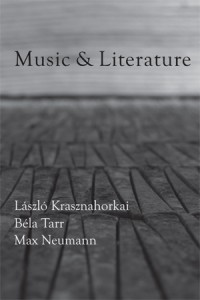 I was recently introduced to the fantastic journal Music & Literature via their 2nd issue focusing on Hungarian writer László Krasznahorkai and filmmaker Béla Tarr, both obsessions of mine. I was excited to have the opportunity to ask Editor-in-Chief Taylor Davis-Van Atta about the project.
I was recently introduced to the fantastic journal Music & Literature via their 2nd issue focusing on Hungarian writer László Krasznahorkai and filmmaker Béla Tarr, both obsessions of mine. I was excited to have the opportunity to ask Editor-in-Chief Taylor Davis-Van Atta about the project.
(From their website:
Music & Literature is a 501(c)(3) charitable organization dedicated to publishing excellent new literature on and by under-represented artists from around the world. Each issue of Music & Literature assembles an international group of critics and writers in celebration of three featured artists whose work has yet to reach its deserved audience. Through in-depth essays, appreciations, interviews, and previously unpublished work by the featured artists, Music & Literature offers readers comprehensive coverage of each artist’s entire career while actively promoting their work to other editors and publishers around the world. Published as print editions (and soon to be offered as digital editions as well), issues of Music & Literature are designed to meet the immediate needs of modern readers while enduring and becoming permanent resources for future generations of readers, scholars, and artists.)
***
Janice Lee: Music & Literature is an exciting new project. Can you talk a bit about its inception and inspiration? I’m curious too about the very simple but semi-mysterious title? (For example, Issue 2 doesn’t seem to have very much music but a bit on film and photography.)
Taylor Davis-Van Atta: I sometimes think of Music & Literature as an act of frustration. It’s certainly a response to the longstanding shortage of high-quality arts coverage in English and, more recently, the austerity and cutting-back of coverage in our so-called traditional media. A lot of the arts review activity cut from newspapers has migrated online and proliferated there, and I often hear people say what a great thing this digital groundswell is, but I have to admit I find myself on the other side of this one… For the moment I’ll speak strictly about books and book coverage: while I can appreciate the benefits of a vast online book culture (broad coverage in terms of numbers of books, plenty of opportunity for young critics to strengthen their skills, etc.), the overall effect, it seems to me, is that a lot of attention may be drawn to the fact that a new book exists, but very little of quality and depth is actually written about the book. Add to this that discerning book and arts criticism has, for some time, been increasingly sequestered to the realm of academic journals—which are written and edited by academics, for academics—and I would argue that there is a missing class of accessible, smart, enjoyable critical literature available today to people who really love and wish to engage deeply with contemporary art.
All of this is just general talk, but maybe what I’m driving at (if anything) is this: if we agree that great art is inexhaustible, I think we need a class of literature that meaningfully engages that art, that offers new in-roads and allows us to explore the dark, recessed chambers of a book or symphony or film so we might see and experience it anew—or that simply provides the opportunity for us to discover an artist or piece of art we haven’t encountered before. This is the need we’re trying to address with Music & Literature. None of this is to say there aren’t venues—print and online—providing high-quality critical literature (I’ll not name names, since I’m bound to forget a few), but none that I’m aware of focus so intently as Music & Literature on providing art lovers with comprehensive, deep, and creative coverage of artists’ entire careers.
Since its inception, I have considered Music & Literature to be an arts magazine, broadly defined; that is to say, I’m interested in publishing all forms of art (and work about all forms of art)—and the more cross-pollination the better. While Issue 1 features two writers (Micheline Aharonian Marcom and Hubert Selby, Jr.) and a composer (Arvo Pärt), and Issue 2 features two giants of Hungarian art (writer László Krasznahorkai and filmmaker Béla Tarr) and a painter (Max Neumann), in each issue (and in future issues) readers will find, say, Noh theatre being discussed alongside the architectural nature of graphic scores, the musicality of an author’s prose discussed alongside the literary implications of a painting, and so forth. Though we chose not to feature a composer in Issue 2, the volume nonetheless contains quite a lot of musical material, including one of Krasznahorkai’s translators, George Szirtes, on the musical complexities of Krasznahorkai’s prose and the difficult pleasures of rendering them into English, as well as a discussion of opera and the nature of evil between Krasznahorkai and composer Péter Eötvös, and more… All forms of art are in constant dialogue with one another, and, for the individual, the experience of great art is the same regardless of the form that art takes: pleasure. For example, we marvel at the ingenuity of architects who reinvent space and encounter, but wither in buildings and structures that create anxiety. It doesn’t take much to intuit the parallels between uninspired architecture and uncreative music, for instance, because all art forms exercise our critical faculties. We enjoy it when our intellects are stretched and challenged: it’s the same part of us that revels in a great musical performance that is awakened by an architectural space that recognizes the human condition and works to incorporate and engage the individual.
As you know, I was first introduced to Music & Literature via Issue 2 (Krasznahorkai / Tarr / Neumann) when a friend of mine brought my attention to it. I was so excited to see both László Krasznahorkai and Béla Tarr as the focal points of a journal, as I’m working through these two figures in both my creative and critical work. What brought you to focus on these three figures for this issue? I’m especially curious since your website states your dedication to publishing work “on and by under-represented artists.” Do you feel these three are still “under-represented” as artists today?
As I suggest above, even the books that dominate chatter in the literary realm receive such little quality critical attention, much less resonate out into the broader culture. Despite some modest attention recently, I do think that Krasznahorkai and Tarr remain very much under-represented. Even if their names are recognized, their art remains largely obscured. This can be said, I believe, of all the artists we feature in Music & Literature. Micheline Aharonian Marcom, Max Neumann, Vladimír Godár, and Maya Homburger are known by very few, and their art resides in virtual anonymity.

